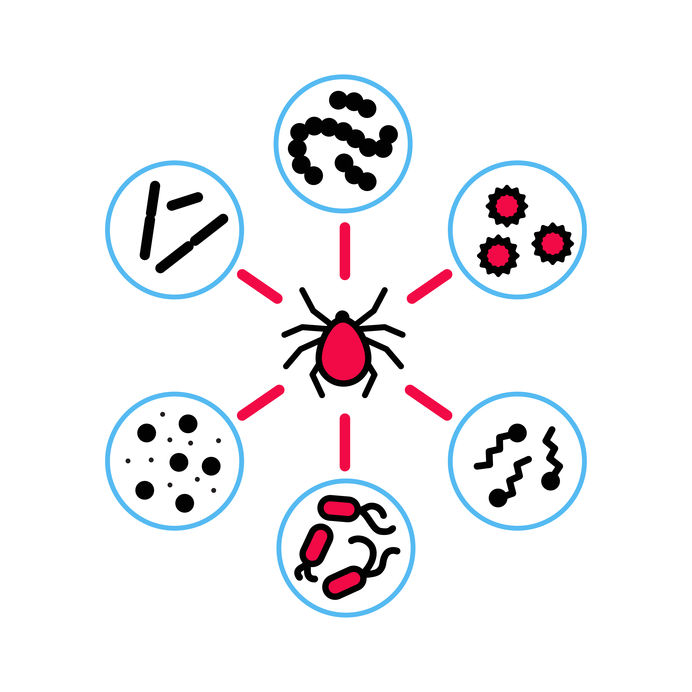
Tick-borne diseases are a growing concern, especially with the increasing prevalence of ticks in many regions. While Lyme disease often takes center stage in discussions about tick-borne illnesses, it’s crucial to be aware of other potentially dangerous diseases transmitted by ticks. In fact, certain ticks, such as the deer tick, can transmit more than one tick-borne disease at a time. In this blog, we’ll explore some of these diseases and provide insight into protecting yourself and your loved ones with the right preventative measures and products!
Powassan Virus
The Powassan virus can be transmitted to humans in as little as 15 minutes after a tick bite. This virus can cause encephalitis, an inflammation of the brain, which can be life-threatening. Symptoms of Powassan virus infection include fever, headache, vomiting, weakness, confusion, seizures, and memory loss. Early treatment is essential to reduce the risk of severe complications.
Anaplasmosis
Anaplasmosis is another tick-borne disease to watch out for, as it can be transmitted by the same deer ticks that carry Lyme disease. Symptoms may include fever, headache, muscle aches, chills, and sometimes a rash. If left untreated, anaplasmosis can cause serious complications such as organ failure or, in extreme cases, death.
Babesiosis
Babesiosis is a tick-borne disease caused by microscopic parasites that infect red blood cells. It’s similar to malaria in its symptoms, which can include fever, chills, sweats, headache, body aches, loss of appetite, nausea, and fatigue. Severe cases can lead to anemia, organ damage, and even death.
Rocky Mountain Spotted Fever
Despite its name, Rocky Mountain spotted fever can be found across the United States. Symptoms can include fever, headache, abdominal pain, vomiting, and a rash that often starts on the wrists and ankles. Prompt treatment is vital to prevent severe complications, such as organ damage or death.
Alpha-gal Syndrome
Alpha-gal syndrome is a unique tick-borne disease that can cause a delayed allergic reaction to meat and, in some cases, products made from mammals (such as milk). This condition is caused by a carbohydrate called alpha-gal being transferred to humans via a tick bite. Most people discover their condition within 6 hours of eating meat or other products containing alpha-gal. Symptoms may include hives, swelling, difficulty breathing, and even anaphylaxis.
Protect Yourself and Your Loved Ones
At TickKey International, Inc., we’re dedicated to providing the best products to help prevent, remove, and test ticks. As the creator of the Original Tick Key™ and TickSee Kit, we offer safe and effective ways to remove ticks from both humans and pets. We have recently partnered with Home First LLC to launch Nature’s Shield FR PRO+ Spray, an all-natural tick repellent available in FR Safe, Adult, Child, and Pet formulas. Additionally, we’ve teamed up with EPA Enterprises for the Cutter Lyme Disease Tick Testing Kit. To learn more, browse our inventory and contact us with any questions.

Recent Comments